The year Roger McCarthy spent designing the alpine resort for the 2014 Sochi Games was quintessentially Russian. It included taking cold showers in Moscow, passing through X-ray machines at an oligarch’s home, and celebrating the anniversary of the KGB with co-workers.
“I could tell stories for days,” McCarthy says with a laugh.
But the former co-president of Vail Resorts always begins the story of his year in Russia with the first trip he made to Sochi. He traveled there in 2007 to decide if he would take a consulting job on Rosa Khutor, the new alpine resort being developed along the Black Sea to host Olympic ski and snowboarding competitions.
“I jump in this car and ride up this road, which is like a paved goat track with tunnels and bridges,” McCarthy says. “You realize immediately, ‘They’re going to have to fix this.’ At that point, there was one hotel that had 25 rooms. Maybe another hotel with a dozen. That’s it. They had maps but no plans. Just concepts.”
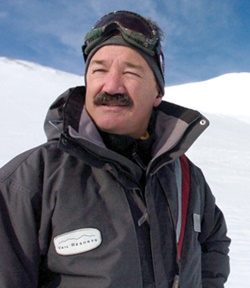 |
Roger McCarthy, shown in a 2004 photo, called Rosa Khutor “a unique opportunity” but “extraordinarily frustrating.”
Photo by: GETTY IMAGES
|
ROGER McCARTHY
■ Company:Roger McCarthy Consulting
■ Age: 63
■ Residence: Whistler, British Columbia, Canada
■ Career: Director of strategy and operations at Rosa Khutor (2007-2008); co-president, mountain division, Vail Resorts (2006-2007); COO, Keystone and Breckenridge resorts (2000-2006); SVP, eastern division, IntraWest (1998-2000); GM, Mount Tremblant (1991-1997); management, mountain operations and human resources, Whistler (1971-1991)
Sochi began as little more than a concept. The city of 340,000 on the Black Sea didn’t even have an alpine resort when Russian President Vladimir Putin decided in the mid-2000s that it should bid for the 2014 Winter Games. Nonstop construction since then has transformed the area. Highways and a rail line have replaced the goat tracks. More than 40,000 new hotel rooms have been built. And a total of 15 new venues have been constructed.
The costs have been staggering. Russia spent more than $50 billion ahead of the Sochi Games, making it the most expensive Olympics in history.
McCarthy was there at the very beginning and his experience working on Rosa Khutor, which cost $2 billion, highlights the challenges the Russians ran into building an Olympic city from scratch. The country had never built a ski resort before, and its lack of expertise led to cost overruns and design mistakes that the world will see firsthand when the Games begin in February.
“It was a unique opportunity that was extraordinarily frustrating,” says McCarthy, who today runs his own resort management and development consultancy. “They had lots of experience in commercial buildings, but it had nothing to do with building in the mountains. Where is the snow coming off the roof? How are the entryways designed? How do you build a resort? It was difficult.”
McCarthy, 63, began working on Rosa Khutor in 2007. The Kiwi had more than two decades of experience in the ski industry and had overseen more than $100 million of development by IntraWest at Whistler in British Columbia. He always wanted to design a resort from scratch, to put ribbons on the trees, cut the runs and pick the best spot for a restaurant.
Sochi provided an opportunity to do that. An old friend, Paul Mathews, who runs the global ski resort consultancy EcoSign, had been hired to develop a new resort there. The developer, a Russian oligarch named Vladimir Potanin, who is worth more than $50 billion, wanted an experienced ski resort executive to join his team full time, and Mathews suggested McCarthy.
“This wasn’t a job for normal people,” Mathews said. “That’s why he was qualified. He could take the punches and roll with it.”
When McCarthy joined the Rosa Khutor development team as strategy and production director in 2007, the budget for the resort was $165 million. McCarthy helped a staff of 20 determine where gondolas would be placed and what the mountain’s avalanche control plan would be. He worked on the layout of trails, where restaurants would be located and — once Russia decided to bid for the 2014 Olympics — he helped design a 2.2-mile downhill course with International Ski Federation alpine course adviser Bernhard Russi.
Throughout the process, McCarthy said he struggled to explain to his Russian colleagues, architects and developers what design elements were needed to make a ski resort work.
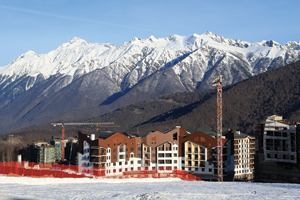 |
Photo by: GETTY IMAGES
|
“Things like stairs inside a building,” McCarthy said. “The stair height is critical. The stair length is critical. You can’t go down regular stairs in ski boots. You need longer tread and shorter rise, and when you’re building, details like that mean everything. I would explain that, then I’d get in a building and the concrete stairs would be completely [messed] up. … I would ask myself, ‘How many battles am I going to have? In the end, if the stairs are too steep, are the Olympics going to fail? No.’”
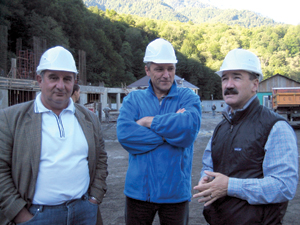 |
Photo by: COURTESY OF ROGER MCCARTHY
|
He ran into similar issues with the architecture. While at IntraWest in the 1990s, he helped the resort develop a European-style design with brick walkways at Mont Tremblant in Canada that it went on to use at Whistler, Squaw Valley and other resorts. He saw an opportunity to do something similar in Sochi, but the Russians opted to go with a series of boxlike, four-story buildings and concrete.
“The architecture is very Russian,” McCarthy said. “There’s not much you can do about that.”
James Brooke, a friend of McCarthy’s and the
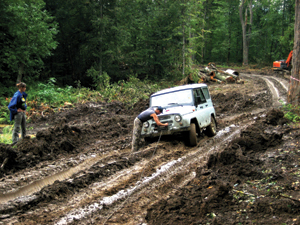 |
Photo by: COURTESY OF ROGER MCCARTHY
|
Russia bureau chief for Voice of America, said, “If you go to Vail, there’s a cute bridge and alpine flowers. The village that’s artificial is neo-Bavarian and organized around a creek. The Russians had a more 1960s attitude to the river (in Rosa Khutor): that it’s a good way to get rid of wastewater. There’s a hell of a lot of cement.”
Costs spun out of control quickly. Rosa Khutor went from a $165 million project to $2 billion. The increase was representative of the soaring costs of the Sochi Games, which were expected to cost $12 billion in 2007 but will be
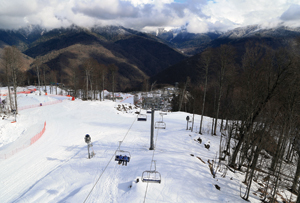 |
In helping Russia build a ski resort, McCarthy had to help determine everything from where to build the roads (while navigating the muddy mess that came before them) to placing gondolas.
Photo by: GETTY IMAGES
|
$50 billion when construction is completed.
A study by Boris Nemtsov, Russia’s former deputy prime minister, says that $26 billion of the money spent on the Sochi Games went to kickbacks and embezzlement. Nemtsov wrote in a report, “It has become increasingly clear that the Sochi Olympics are an unprecedented thieves’ caper.”
McCarthy said he stayed out of the financial decisions for Rosa Khutor, but the business practices were enough to make EcoSign executives uncomfortable.
“The whole thing morphs into a Russian system,” said Mathews, whose company lost its contract to work on Rosa Khutor in 2011. “There are all these kickbacks. People would ask us to pay or offer to pay me. I would say, ‘We don’t know how to do that.’ That’s probably why they didn’t keep us around. It’s sort of a gong show.”
Mathews pointed to the mountain’s snowmaking system as the perfect example of potential corruption. He said Rosa Khutor spent $100 million on a snowmaking system that would cost most resorts just $20 million. The costs rose further when the lighting system was installed a year later and the snowmaking system was dug up in the process, requiring it to be repaired.
“It’s an Olympic project,” Mathews said. “That [type of costly mistake] probably happened in Beijing, London and Greece.”
McCarthy’s contract to work on Rosa Khutor ended in 2008, and he returned to his home in Whistler. He hasn’t been back to Sochi since he left, and doesn’t plan to attend the Games, but he expects Rosa Khutor to be a great Olympic resort. He believes it will have plenty of snow and the downhill will test the world’s best skiers. His only concern is whether the staff, which has little to no resort experience, will be able to manage so many international guests.
“If it all comes together, it will be fabulous,” McCarthy says. “It will be a great place to go and ski. It’s the human piece that will be a challenge. The human piece really has no experience. But if the sun shines, the snow stays where it’s supposed to stay, and TV is happy, boom, it will be fabulous.”









